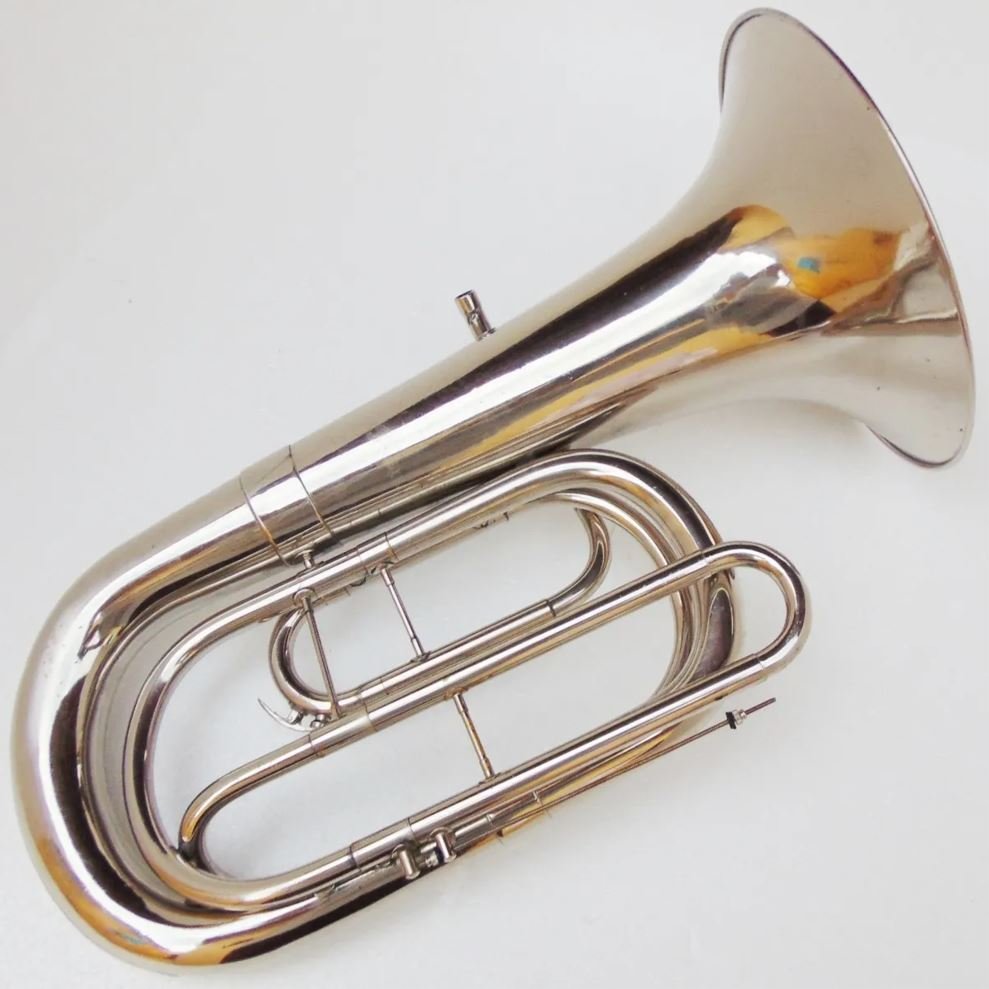Brazilian Slide Bugles
In low brass circles, the topic of “slide euphonium” is occasionally brought up. Do they exist? Is it even physically possible?
The answer is usually “no” to both counts, and to be fair that’s technically correct if you’re trying to preserve the euphonium’s conical bore throughout. You could try a variation of E.A. Couturier’s conical trombone slides I suppose, but that would be unlikely to even be functional on a wide-bore cone like a euphonium.
The real, better answer is “kind of.”
A euphonium with a full-length 7-position slide is impossible. However, you could easily make a “slide euphonium” by putting an appropriately-sized cylindrical handslide with 1-3 positions early in the tubing. It would physically work, but the euphonium would be drastically less conical than a valved one. This would likely result in an intonation nightmare and a sound noticeably different from a normal euphonium, not to mention understandable debates on whether it still qualifies as a euphonium at all.
What’s more interesting than all that is that the instrument just described not only exists but is performed with regularly. Welcome to the wacky world of the Brazilian cornetão gatilho, or slide bugle.
These instruments are used in Brazilian carnival music in sizes from soprano to bass. The two largest members of the family are slide euphoniums!
There is almost nothing about these instruments on the English-speaking Internet, which is the main reason I wrote this article. What I have been able to find from Brazilian websites are the following instruments:
Corneta Gatilho Soprano
Pictured is a Weril B-flat model, but these come in B-flat, F, and E-flat. Whole step handslides seem to be universal.
Corneta Afinação Soprano
These instruments have both a short handslide and a whole-step piston valve. Unlike the slide-only sopranos, these seem to only be in B-flat.
Cornetão Gatilho Contralto
The least common ones out of those I could find online. This one (by Weril) is in E-flat.
Cornetão Gatilho Tenor
These are mostly in B-flat, but I have seen them in alto F as well, still taking a trombone mouthpiece. They are often furnished with only half-step slides, though this Weril model seems to have a whole-step slide.
Cornetão Gatilho Eufônico
Slide euphonium!
Bombardino De Marcha Sem Pistos
Literally “marching euphonium without pistons”, this is the bass of the slide bugle family. Although it sounds like a euphonium and plays in the same range, it is pitched in bass F or E-flat.
There are also cornetão with just one whole-step piston valve and no handslide (including in odd keys like G), and others with no handslide OR piston. However, it seems that the cornetão gatilho with just the slide is the standard.
Far be it from me to just talk about these instruments. Here is a video of them in action:
This band looks like it includes sopranos, tenors, and the bass euphoniums (which seem to be in E-flat based on the slide positions). Although it presents more intonation challenges, I think the short handslide is an intriguing solution to the “make bugles be able to play more notes” problem that North American drum and bugle corps tackled in a different way.
This is the extent of what I’ve been able to find online (as a non-Portuguese speaker) about this family of instruments. If you are Brazilian and know more about them or have experience playing them yourself, please feel free to reach out to me! I would love to learn more about the history and common practice of these instruments.






